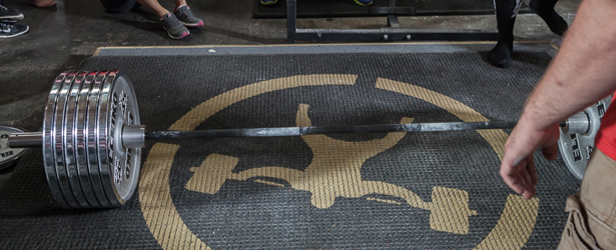
Last August I missed a 375-pound deadlift. I'm an ultra-lightweight strongman competitor, so a 375-pound miss is not that devastating. There was only one problem: it was part of Matt Wenning's So You Think You Can Deadlift series. Everyone saw me miss 375 pounds — and not gracefully. It was a complete miss; the bar was stapled down and I ate it. Hard.
That failure motivated me. I knew it wasn't the worst miss in the world, but after having worked with Wenning to improve my technique, I came up with a programming plan to conquer that 375-pound deadlift. I put this plan into motion and roughly 20 weeks later I not only overcame my previous failure, but I crushed it. I went from a complete miss at 375 to a clean 410. This is how I did it.
Deadlifting to Build Your Deadlift?
I have read over and over that deadlifting heavy will not build your deadlift. It just makes it awful and kills your technique because the struggle to hit your numbers becomes part of your “form.” Form work doesn’t make anyone stronger and practicing something wrong doesn’t make you any better. So that was the conundrum: how do I fix my deadlift without deadlifting?
Understanding what speed work actually does to you on a cellular level and being realistic about my strength level I knew that pulling 50% of my max fast with bands wasn’t going to get the job done. Why focus on transitional muscle tissue plasticity when the issue is that I am not utilizing the tissue I already have dedicated to the job at hand? I came up with a hypothesis:
“I will increase the rate of force development of my primary, secondary, and tertiary muscles in a way that will build necessary stabilizers and increase my deadlift.”
That’s right, I am not a pro. I am not in the upper 10% of my sport yet. My realization from this was that I just need to be stronger all over, not more specialized in one specific area of my pull. The easy part to solve was that I needed stronger quads, hamstrings, glutes, low back, abdominal, and grip muscles.
These are the lifts I chose:
- Hams and Quads
- Arched Back Concentric Spider Cambered Bar Good Mornings out of Chains
- Arched Back Yoke Bar Good Mornings out of J-hooks
- Deadlift
- Deficit Axle Bar deadlift
- Glutes/Low back
- Superwide Straight Leg Deadlifts
- Hungarian Core Blaster
- Glute Ham Raise
- Abdominal
- Rotational Coreblaster
- Hungarian Coreblaster
- Grip
- Rickshaw Carry (for distance)
All hamstring and quad work was treated as primary-mover training. Glutes, low back, and abs were treated as secondary movers and stabilizers. Their weights were percentages of primary mover maxes done for reps and time depending on how I performed them. All lifts were rotated every four weeks. The goal on my primary lifts was to increase them and beat my previous maxes. Always. The goal of my secondary stabilizers was to continuously increase the weight while total volume remained constant or the weight remained constant and total volume increased.
This all rotated around the ideas that more weight on the bar meant more force production than previous attempts, increased reps at constant weight equals more strength, and greater weight with constant volume indicates strength increases.
I train submaximal (85-98%) lower body twice a week, one day focusing on pushing strength the other on pulling strength.
The current template for my pulling strength is this:
- Primary Lift for Max
- Grip (3-4 minutes of submaximal tension)
- Secondary lift: Fixed weight using the repetition method once reps approached points of diminishing returns weight is increased.
- Secondary lift: Increasing weakly percentages based off maxes. The sets are for a fixed time at 3-4 reps per session
The truth is that I am glad I missed 375 that day. For six months up to that point I was focused on improving my programing for the sport of strongman. I made some decisions that I thought were logical. I thought wrong. I am glad I was wrong because what I learned from those errors in programming was enormous. My failure set me up for huge success.
How? Because now I know exactly what not to do. And that makes the right thing much more clear.
Another point that I would like to address is that everyone under 230 pounds bodyweight does not dead lift 500 pounds raw. The internet is not a real place; it is just 1’s and 0’s that Al Gore put in motion. To truly be successful and not put yourself in a wheel chair in this sport you need to take three steps back and be realistic about what you can do and cannot do. Then take what you can do and be proud of it and improve upon it. Point in case, I went on one of the largest strength communities online and pulled less than four plates. Why? Because I was open to improving me as an individual and helping the greater community learn in the process. The truth is, fewer 175 and 200-pound class lifters in the North American Strongman Association Strongman are deadlifting 405 to 500 raw off the floor than aren't. Most of them would never get white lighted at a powerlifting meet.
So get in there, do what you can versus what you cannot, and get stronger. Because that’s the point: the continuous pursuit of strength and growth in physical culture, not “Likes” on a webpage.











2 Comments